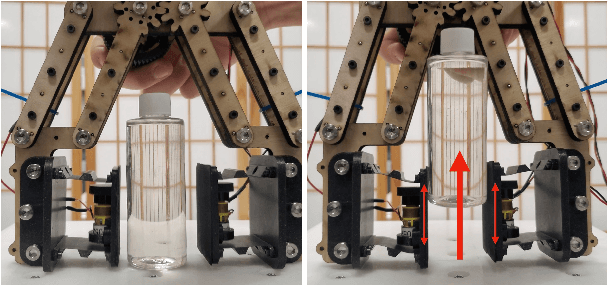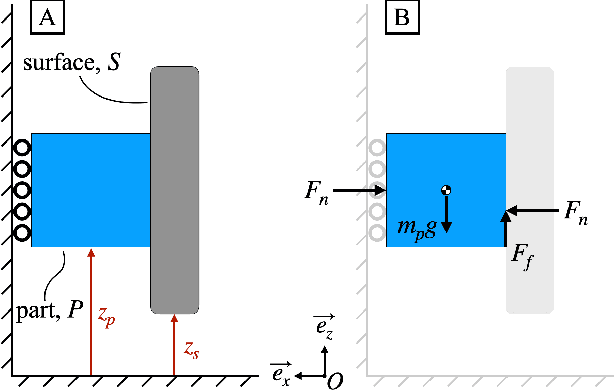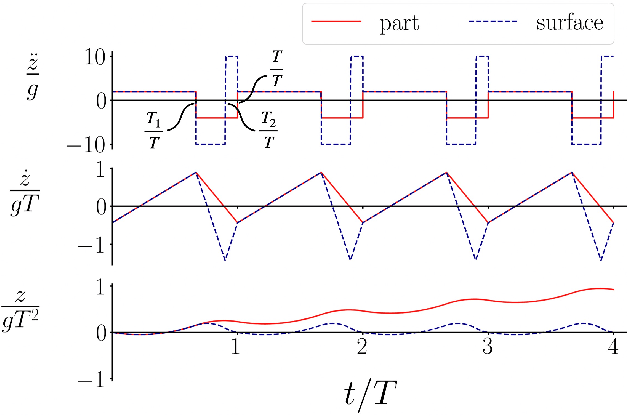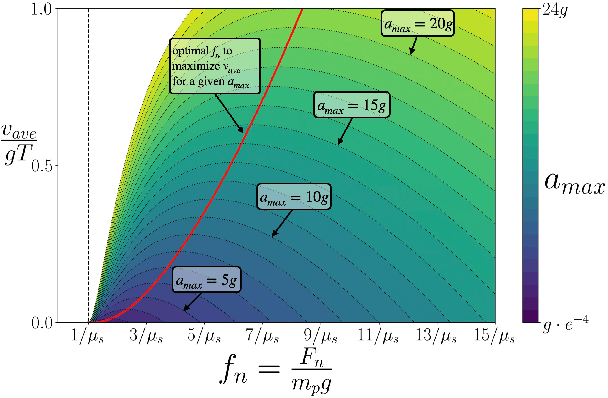Vertical Vibratory Transport of Grasped Parts Using Impacts
Paper and Code
Feb 08, 2025



In this paper, we use impact-induced acceleration in conjunction with periodic stick-slip to successfully and quickly transport parts vertically against gravity. We show analytically that vertical vibratory transport is more difficult than its horizontal counterpart, and provide guidelines for achieving optimal vertical vibratory transport of a part. Namely, such a system must be capable of quickly realizing high accelerations, as well as supply normal forces at least several times that required for static equilibrium. We also show that for a given maximum acceleration, there is an optimal normal force for transport. To test our analytical guidelines, we built a vibrating surface using flexures and a voice coil actuator that can accelerate a magnetic ram into various materials to generate impacts. The surface was used to transport a part against gravity. Experimentally obtained motion tracking data confirmed the theoretical model. A series of grasping tests with a vibrating-surface equipped parallel jaw gripper confirmed the design guidelines.
 Add to Chrome
Add to Chrome Add to Firefox
Add to Firefox Add to Edge
Add to Edge